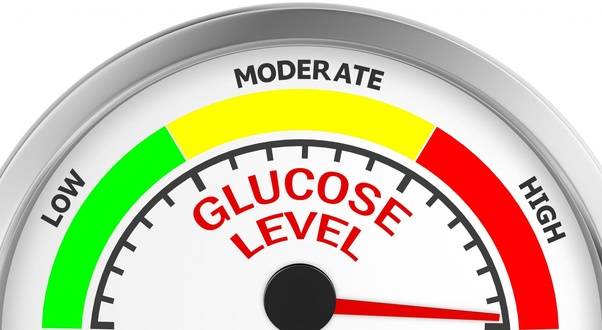Blood glucose levels are an important indicator of a person's health, especially for those with diabetes. Glucose is a type of sugar that our body uses for energy, and it's usually controlled by the hormone insulin. When blood glucose levels are too high or too low, it can cause serious health problems. The normal range for blood glucose levels is between 70-100 mg/dL (milligrams per deciliter).
The body gets glucose from the food we eat, and it's either used for energy right away or stored in the liver and muscles for later use. The hormone insulin helps control blood glucose levels by telling the body when to use or store glucose. If there's too much glucose in the blood, it can cause problems like damage to blood vessels, nerves, and organs. There are several things that can affect blood glucose levels, including diet, exercise, medications, and stress.
1. specific diseases related to blood glucose levels
There are two main types of diabetes, type 1 and type 2. Type 1 diabetes is an autoimmune disease where the body can't produce enough insulin to control blood glucose levels. Type 2 diabetes is more common, and it's a condition where the body doesn't use insulin properly. This is often due to lifestyle factors like diet and exercise, and it can be managed through lifestyle changes and sometimes medication. Another condition related to blood glucose levels is prediabetes, which is when blood glucose levels are higher than normal but not yet high enough to be considered diabetes.
2. Causes and risk factors.
For type 1 diabetes. It's an autoimmune disease, which means that the body's immune system attacks the cells that produce insulin. This usually happens in childhood or adolescence, and the exact cause is not known. Risk factors for developing type 1 diabetes include having a family history of the disease, being born prematurely, and having certain genetic variants. Type 2 diabetes, on the other hand, is a result of lifestyle factors and genetics. Risk factors for developing type 2 diabetes include being overweight or obese, having a sedentary lifestyle, and having a family history of the disease.
3.Symptoms of diabetes.
The main symptoms of diabetes include increased thirst, increased urination, and increased hunger. Other symptoms may include fatigue, blurred vision, and numbness or tingling in the hands or feet. If you have any of these symptoms, it's important to see a doctor to get tested for diabetes. Type 1 diabetes usually develops quickly, while type 2 diabetes often develops gradually over time.
4. Treatment options for diabetes.
There are several treatment options available for diabetes. For type 1 diabetes, treatment involves taking insulin to replace the insulin that the body is not producing. This can be done through injections or an insulin pump. For type 2 diabetes, treatment usually starts with lifestyle changes like diet and exercise. If lifestyle changes are not enough to control blood glucose levels, medication may be prescribed. There are several types of medication that can be used to treat type 2 diabetes, including metformin, sulfonylureas, and GLP-1 agonists.
5.Long-term complications of diabetes.
The long-term complications of diabetes can be serious and even life-threatening. They include heart disease, stroke, kidney disease, nerve damage, and vision loss. People with diabetes are also at an increased risk for amputation. That's why it's so important to manage diabetes with lifestyle changes and medication, if needed.
6.prevention of diabetes.
Prevention is key when it comes to diabetes, especially type 2 diabetes. There are several things you can do to reduce your risk of developing diabetes, including maintaining a healthy weight, eating a healthy diet, getting regular physical activity, and quitting smoking. It's also important to manage stress and get enough sleep. And if you have prediabetes, making lifestyle changes can help prevent or delay the onset of diabetes.
7.How diabetes is diagnosed.
To diagnose diabetes, doctors typically use blood tests to measure blood glucose levels. There are two main tests used to diagnose diabetes, the fasting plasma glucose test (FPG) and the A1C test. The FPG test measures blood glucose levels after a person has fasted for at least 8 hours. A result of 126 mg/dL or higher on this test indicates diabetes. The A1C test measures average blood glucose levels over the past 2-3 months. A result of 6.5% or higher on this test indicates diabetes.
8. How diabetes is monitored.
Once a person has been diagnosed with diabetes, it's important to monitor blood glucose levels on a regular basis. This can be done with a glucose meter, which is a small device that you use to prick your finger and get a drop of blood. You then put the drop of blood on a test strip and insert it into the glucose meter to get a reading. Most people with diabetes should test their blood glucose levels at least once a day, and some people may need to test more often.
9.The importance of self-care in diabetes management.
In addition to monitoring blood glucose levels, it's also important for people with diabetes to take care of their overall health. This includes eating a healthy diet, getting regular physical activity, and maintaining a healthy weight. It's also important to manage stress, get regular checkups, and take medications as prescribed. Taking care of yourself and managing your diabetes can help prevent or delay the development of complication.
diabetes is a serious condition that can have a significant impact on a person's health and finances. However, there are many ways to manage diabetes and reduce the risk of complications. With proper self-care, people with diabetes can lead healthy, active lives.


